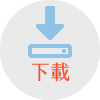簡易檢索 / 詳目顯示
| 研究生: |
陳勇亲 Damien Yon Chin Tan |
|---|---|
| 論文名稱: |
鋼筋混凝土柱構件之圍束與強度 耐震性能提升研究 Improving Studies on Seismic Performance of Confinement and Strength for Reinforced Concrete Column |
| 指導教授: |
邱建國
Chien-Kuo Chiu |
| 口試委員: |
林克強
Ker-Chun Lin 王勇智 Y.C.Wang 鄭敏元 Min-Yuan Cheng |
| 學位類別: |
碩士 Master |
| 系所名稱: |
工程學院 - 營建工程系 Department of Civil and Construction Engineering |
| 論文出版年: | 2018 |
| 畢業學年度: | 106 |
| 語文別: | 中文 |
| 論文頁數: | 189 |
| 中文關鍵詞: | 柱構件 、複合柱(一筆式矩形箍與圓箍) 、NewRC 、高強度SD 550W鋼筋 、標準彎鉤 、耐震性能 |
| 外文關鍵詞: | Column, Composite Column, New RC, Grade SD550W High-strength Steel, Standard hooks, Seismic Performance |
| 相關次數: | 點閱:670 下載:5 |
| 分享至: |
| 查詢本校圖書館目錄 查詢臺灣博碩士論文知識加值系統 勘誤回報 |
採用抗彎構架系統之建築結構物的底層柱構件為承受結構體的重力載重之主要受力構件,柱構件亦需提供建築物抵抗地震側向力的強度與韌性能力,是一項重要的耐震性能指標。
鋼筋混凝土建築結構的底層柱承受極大因重力與地震引致的軸力,因此欲提供充分的耐震強度與柱構件的變形能力,其耐震圍束效果極為關鍵。因鋼筋混凝土柱構件之圍束行為決定了柱構件的變形能力,且考慮施工的方便性與精準度,本研究對一筆式矩形箍內增加一圓箍,形成一矩形柱中再配置一圓形柱之複合柱,以有效改善矩形柱之圍束效應。
依照目前規範,若使用一般鋼筋混凝土進行RC柱之設計,柱斷面尺寸需被放大以滿足柱構件之抗測力能力。為有效的提升構件之抗側力能力並減小柱斷面尺寸與鋼筋配置量,本研究採用高強度SD 550W鋼筋之使用,以提升其耐震性能以及改善施工品質。為檢視採用SD 550W鋼筋之柱試體之耐震性能,本研究共針對三組採用SD 550W鋼筋之柱試體以及一組採用SD 420W鋼筋之柱試體進行耐震性能評估,主要設計參數為鋼筋配置量、鋼筋強度規格以及設計軸力,目的即探討SD 550W鋼筋之適用性。
本文除探討柱構件強度變形行為與破壞模式外,亦根據耐震性能評估準則ACI 374-12進行柱構件之耐震性能分析。測試結果顯示,一筆式矩形箍內增加一圓箍之柱試體的圍束效果最佳;採用高強度SD 550W鋼筋之柱試體與採用SD420W鋼筋之柱試體的圍束配置量相同,在同樣進行高軸力加載的情況下其變形能力、破壞模式相近,顯示SD 550W鋼筋之可行性。
Normally in a structure, base column member often acts as the main structural member which using bears the gravity load of the whole structure. Column member needs to provide the strength and ductility that the structure needed in order to prevail during an earthquake. Therefore it is regarded as an important index of earthquake resistance engineering.
Base column of a structure is subjected to the axial force caused by gravity and earthquake. Therefore, in order to provide sufficient seismic strength and deformation ability of the column member. The confinement of a reinforced concrete column is extremely important as it determines the deformation ability of a reinforced concrete column members. Considering the convenience and precision of construction, in one of our study, a composite column featuring a continuous rectangular hoops and a round hoops is studied. It is somehow perform as a double core column as it contains a circular column inside a rectangular column. It is believed to be extra effective in improving the confinement effect of the column. Another two column is studied in which one of them is a typical traditional column with standard hooks while the other includes the error of 10mm in standard hooks. They are studied as comparisons to the composite column.
According to current code, in order to meet with the demand of increasing a RC column shear resistant force, the section size of a column is enlarged. However, by enlarging the size of a column or simply by increasing main bars reinforcement ratio causes further problems. In order to effectively improve the shear resistant force of a column component without enlarging the section size or increasing the reinforcement ratio, this study uses Grade SD 550W steel as high-strength steel to improve its seismic performance and improve its’ construction quality in the same time. In order to examine the usage of Grade SD 550W steel in column main bars, in this study we evaluate the seismic performance of new-RC column testes using SD 550W steel bar and another set of column test using SD 420W steel bar as a comparison to traditional reinforcement concrete. Design parameters includes longitudinal reinforcement ratio and axial force. Its’ purpose is to explore the applicability of the Grade SD 550W steel bar.
In addition, strength deformation behavior and failure mode of column members is to be discussed. Seismic performance analysis of column members is carried out according to the seismic performance evaluation criterion of ACI 374-12. The test results show that composite column has the best performance in comparisons with the others in the confinement effectiveness study. While for the test specimen with the high-strength steel bar of Grade SD 550W, with the same transverse reinforcement ratio, all three column with exact high axial force shares the exact performance in column deformation and stiffness regardless of its’ main bars steel grade. Thus the increase of main bars steel strength sure shows positive signs in increasing shear demand. All four specimens of high-strength steel main bars study have the same failure mode of flexural failure, showing the applicability of SD 550W steel bar.
[1] ACI Committee 318, “Building Code Requirements for Structural Concrete and Commentary.”, American Concrete Institute, Farmington Hills, 2014.
[2] J.B.Mander, M.J.N. Priestly, and R. Park, “Theoretical Stress-Strain Model For Confined Concrete.”, J.Struct., ASCE, 114(8),1804-1826.
[3] CNS 560, 「鋼筋混凝土用鋼筋」,中華民國國家標準,2018。
[4] 中國土木水利工程學會, 「混凝土工程設計與解說(土木401-100)」,科技圖書,台北,2011。
[5] 呂佳明,「主筋與一筆箍平面配置誤差對RC柱構件力學行為之影響」 ,碩士論文,國立中央大學土木系,桃園,2018。
[6] 黃冠傑,「鋼筋混凝土柱耐震圍束之研究」,碩士論文,國立台灣大學,台北,2013。
[7] Elwood, K., J., Maffei, J., M.,Rieder, K.,A., Telleen, K., “Improving Column Confinement-Part 1: Assessment of Design Provisions,” Concrete International, American Concrete Institute, 2009.
[8] Elwood, K., J., Maffei, J., M.,Rieder, K.,A., Telleen, K., “Improving Column Confinement-Part 2: Proposed New Provisions for the ACI 318 Building Code ,” Concrete International, American Concrete Institute, 2009.
[9] Richart, F. E., Brandtzaeg, A., and Brown, R. L. (1928). “A Study of the failure of concrete under combined compressive stresses.” Bulletin 185, Univ. of Illinois Engineering Experimental Station, Urbana-Champaign, IL.
[10] Richart, F. E., Brandtzaeg, A., and Brown, R. L. (1929). “The failure of plain and spirally reinforced concrete in compression.” Bulletin 190, Univ. of Illinois Engineering Experimental Station, Urbana-Champaign, IL.
[11] ASTM Comitee A706/A706M, “Standard Specification for Deformed and Plain Low-Alloy Steel Bars for Concrete Reinforcement.”, ASTM International, West Conshohocken, United States, 2015.
[12] Whitney, C. S., “Design of Reinforced Concrete Members Under Flexure or Combined Flexure and Direct Compression,” Journal of American Concrete Institute, Vol.33, 1937.
[13] The European Standard, “Eurocode 2: Design of concrete structures –Part1-1: General rules and rules for buildings.”, British Standards, BS EN 1992-1-1, 2004.
[14] 張豐展,「高強度鋼筋混凝土柱圍束效應研究」,碩士論文,國立台灣大學土木工程系,台北,2010。
[15] 陳盈璋,「高強度鋼筋混凝土柱耐震圍束效應之研究」,碩士論文,國立台灣大學土木工程系,台北,2011。
[16] Standards Association of New Zealand, “Concrete Design Standard, NZS3101:2006,Part 1” ,222 pp. and “Commentary on the Concrete Design Standard, NZS 3101:2006, Part 2,” Wellington, New Zealand, 2006, 646 pp.
[17] ACI 374 Committee, “374.1-11: Acceptance Criteria for Moment Frames Based on Structural Testing and Commentary,” American Concrete Institute, Farmington Hills, Mich., 2012.
[18] 紀偉凡,「高強度鋼筋混凝土柱耐震圍束效應之研究」碩士論文,國立台灣大學土木工程系,台北,2012。
[19] Federal Emergency Management Agency, American Societyof Civil Engineers, “Prestandard and Commentary for the Seismic Rehabilitation of Buildings(FEMA 356),” Federal Emergency Management Agency,2000.
